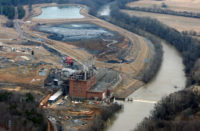Rising medical costs are driving up workers’ compensation costs despite the success of safety programs in reducing the frequency and severity of construction accidents.
“There are a number of competing factors affecting rates,” says Mary Ann Krautheim, client strategy officer for Aon Risk Services’ Construction Services Group, Boston. Incident rates are dropping because of increased safety measures, as well as a drop in the labor force due to the recession. Lost-time payments are declining, but the cost of claims is rising. “Medical inflation is countering the positive trends,” Krautheim says. “So it’s a push-pull relationship.”
There are other factors influencing workers’ compensation rates. In the first half of the year insurance carriers invested in stocks and bonds, but the declining markets have kept returns low. There was some improvement in the third quarter, but it remains to be seen how investments will affect rates, Krautheim says.
Workers’ compensation reserves, which are banked to pay future claims, have deteriorated this year from a $2-billion deficiency to about a $6-billion deficiency and will likely push costs up. “But that will take time to show up in rates,” Krautheim says.
Still, the biggest challenge in controlling workers’ compensation rates is controlling medical costs. Even in California where rates have come down dramatically as a result of numerous reforms, the reductions are slowing. “Medical costs are overshadowing all the good things that have been done to mitigate costs,” Krautheim says. Medical costs have increased 6% over the past year.
The National Council on Compensation Insurance is halfway through its rate filings for the states this year, and once again the majority of the filings are lower than in 2008, says Peter Burton, senior division executive for state relations at the Florida-based organization. “Twenty have been filed, and sixteen are lower; four are higher. We’re pretty much where we ended up last year,” he says.
A drop in the frequency of claims is the prime cause of dropping rates, Burton says. Workers are not getting injured as often, but compensation for claims is rising. Medical costs, which make up 60% of the payment for claims, is the biggest reason. “Twenty years ago the biggest payment was for lost wages,” he says.
The recession has helped to reduce the frequency of claims, which is common in recessionary periods, says Burton. “Experienced workers are not the ones who are laid off. The less experienced people go first,” he says. Veteran workers are less likely to have accidents, he says.
The recessionary wild card is the stimulus package, says Burton. If money is directed toward more hazardous projects such as road building, it could affect the overall number of claims.
The bright spot in state rates is Florida, which since 2003 has made a spectacular recovery from when it was one of the most costly states for workers’ compensation. “Rates have dropped 50% since then,” Burton says. Fraud was a big problem then, but the state stepped in to control the problem by adding auditors and inspectors, he says.
Florida also has harnesssed attorney costs by implementing a sliding scale for fees, based on the size of an award, replacing hourly billings.





Post a comment to this article
Report Abusive Comment